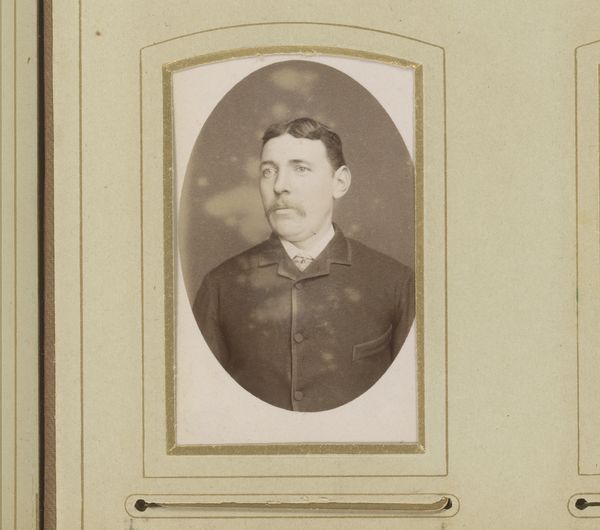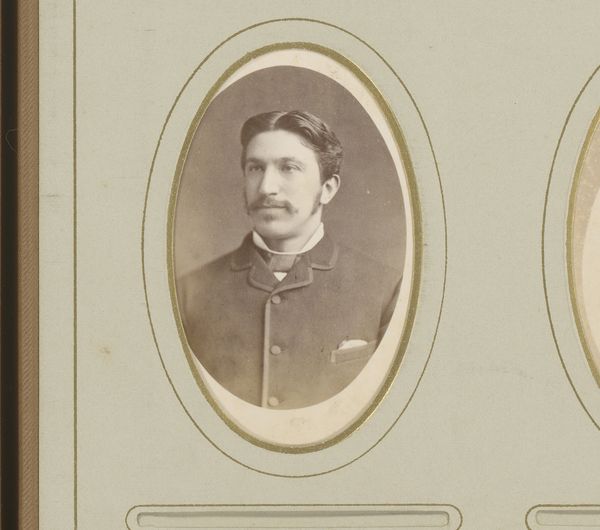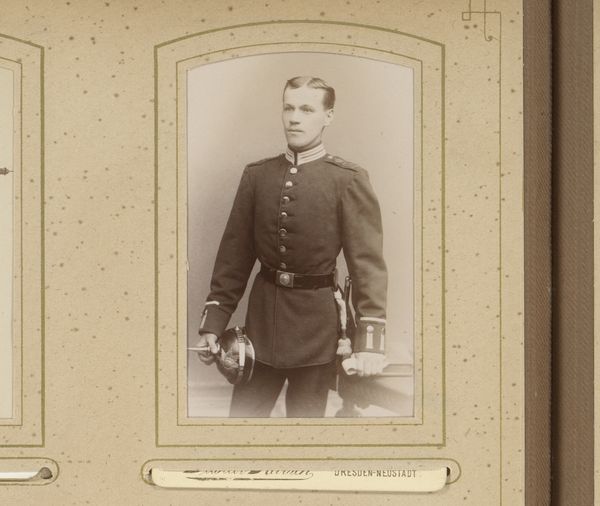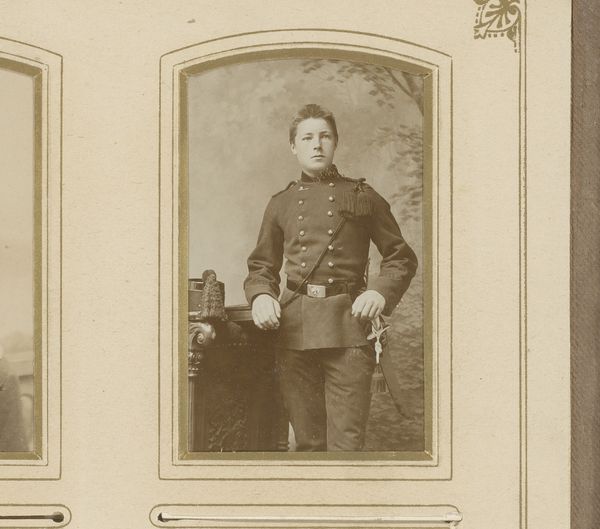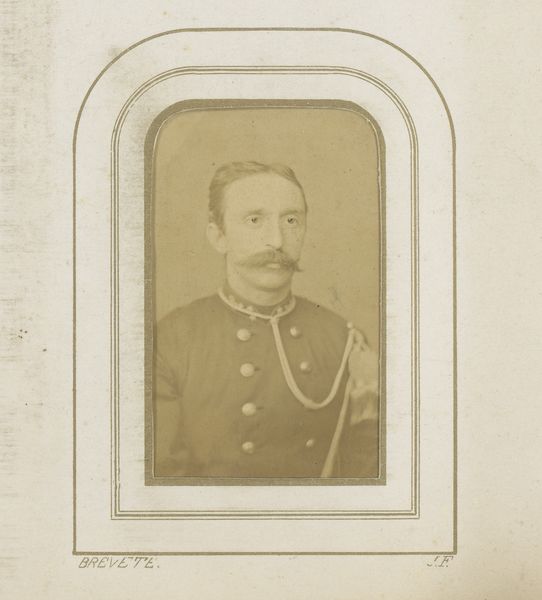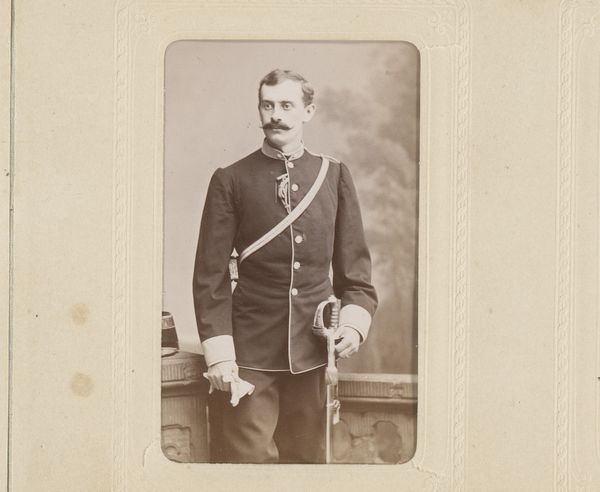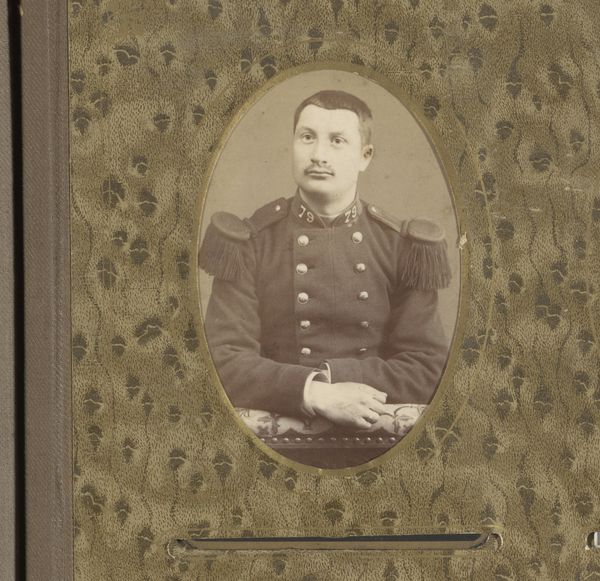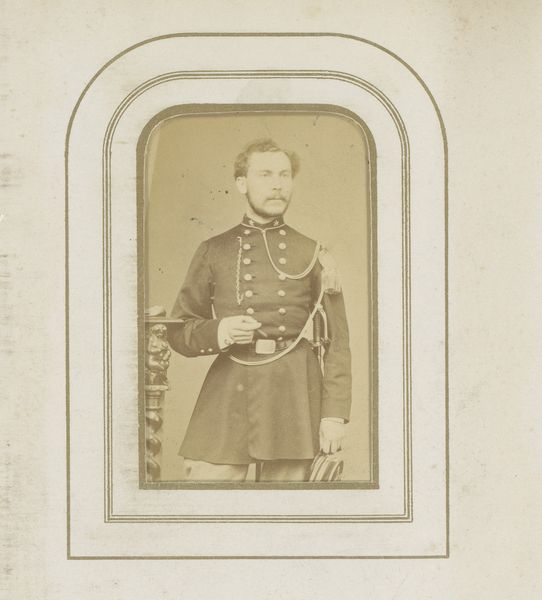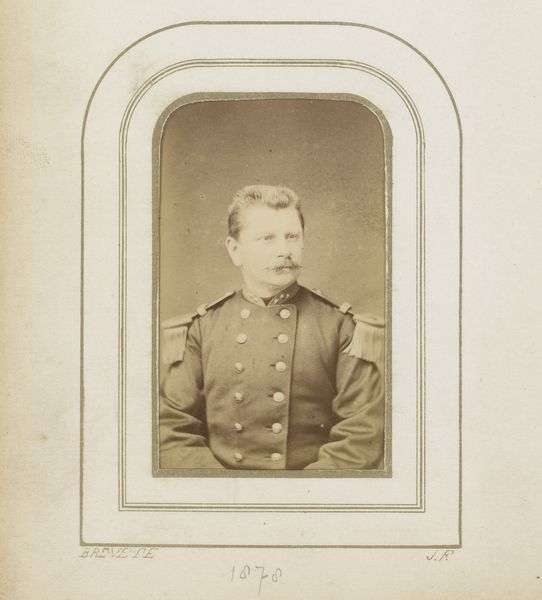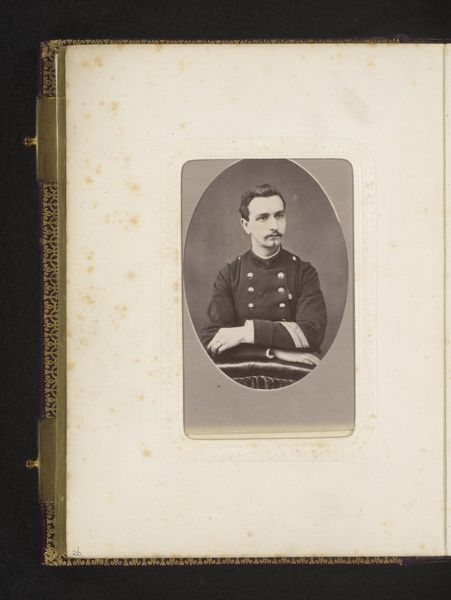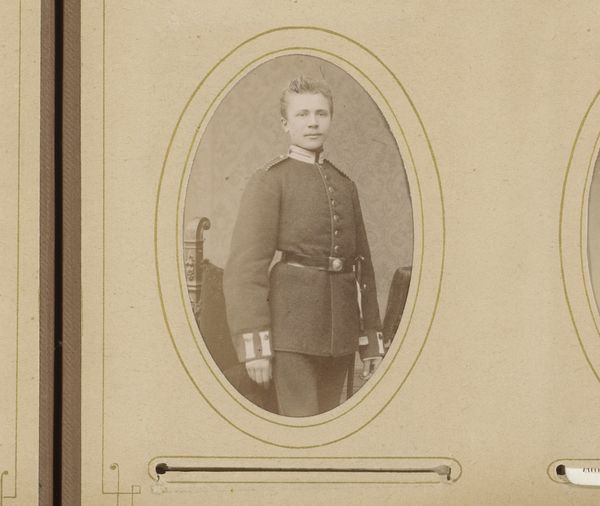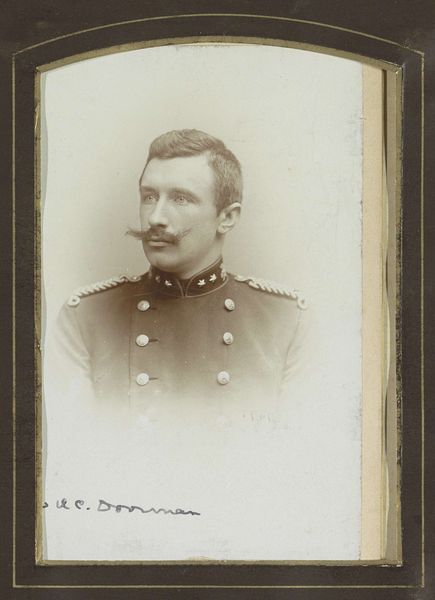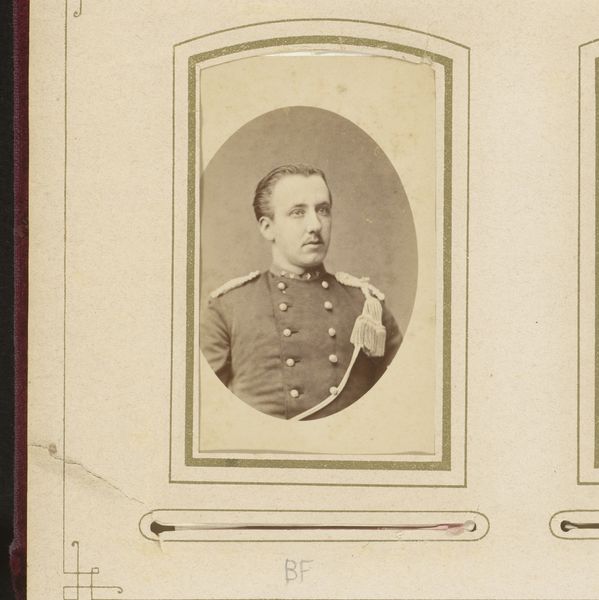
photography
#
portrait
#
photography
#
genre-painting
#
realism
Dimensions: height 82 mm, width 51 mm
Copyright: Rijks Museum: Open Domain
Curator: Here we have an intriguing photographic portrait from between 1860 and 1900, identified as “Portret van een staande man met snor en bril,” of a man in what appears to be a uniform. Editor: My first impression is one of stoicism, perhaps even melancholy. The tight composition and somber tones convey a sense of restrained formality. The grey palette creates an eerie effect. Curator: Precisely. The figure dominates the composition. Observe the careful arrangement of light and shadow to model his face and uniform, which provide crucial cues regarding his role. This treatment aligns perfectly with photographic realism, a key style in portraiture during that era. Editor: Indeed. It’s fascinating to consider the social context. Photography at this time was becoming more accessible, yet portraits like these still held significance in representing social standing and personal identity. Note his precise posture and steady gaze; those certainly mirror societal expectations and norms. Curator: Moreover, observe the technical limitations of early photography. The sharp focus on the figure and relatively softer background reflects the slower shutter speeds and challenges in achieving overall image sharpness, as do the slightly blurred details in the peripheral vision, such as the surface where his hand rests. Editor: And one must consider that the choice of his garb and its level of sartorial ornamentation are markers of not just class but political or social affiliation too. This wasn't just about commemorating likeness. It projected social meaning within a precise historical structure. Curator: Very well, by studying the gradations of tones and linear definition of his clothing, along with the compositional framing, we witness the fusion of emerging photographic practices and traditional modes of portrayal. The details embedded inside contribute immensely towards establishing a character or role for this subject. Editor: Yes. Seeing photography, as both personal archive and historical document, creates an intriguing dialog that deepens my original perception of dignified somberness, but layered with understanding his historic period!
Comments
No comments
Be the first to comment and join the conversation on the ultimate creative platform.
